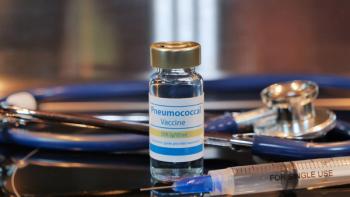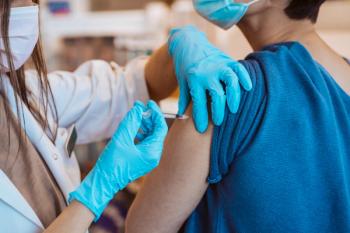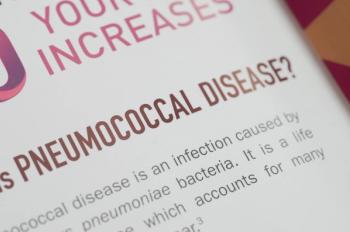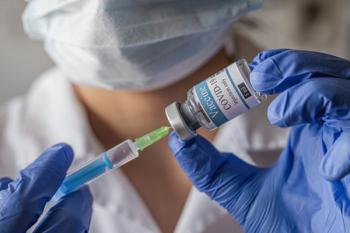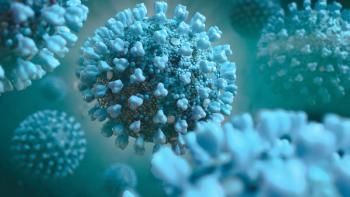
- Drug Topics August 2020
- Volume 164
- Issue 8
Communicating Facts Can Help Boost HPV Vaccination Rates
Pharmacists should counsel patients on how taking steps now can prevent certain cancers later.
An estimated 80% of Americans will be infected with human papillomavirus (HPV) at some point. For many people, the infection will clear on its own without causing symptoms; for others, it can cause cancer later in life.1
Pharmacists are highly trained and conveniently positioned to advocate for and administer vaccines. “As highly accessible healthcare professionals, pharmacists are equipped to identify patients who should receive the HPV vaccine and increase vaccination rates to assist with disease prevention,” said Katelyn Johnson, PharmD, MS, BCACP, assistant professor of pharmacy practice and community pharmacist at University of Cincinnati James L. Winkle College of Pharmacy and Kroger Health in Cincinnati, Ohio.
Community pharmacists are among the most accessible health care professionals; more than 90% of Americans live within 5 miles of a pharmacy, noted Deanna Tran, PharmD, BCACP, an assistant professor of pharmacy practice and science at the University of Maryland School of Pharmacy in Baltimore. These providers interact with customers who are picking up their medications, getting an OTC recommendation, or just passing by while buying something else. “Through these regular interactions, pharmacists are uniquely positioned to provide education on HPV and HPV vaccines, debunk myths associated with the vaccine, and administer the vaccine at the pharmacy,” she said.
Furthermore, young adults, including those in the age group indicated for the vaccine, often seek out convenient health care. Community pharmacists can provide that convenience, Tran said. Pharmacies may be open later than a traditional medical office or clinic practice, and pharmacists can administer vaccines with minimal wait times or without appointments. Community pharmacists can also play a vital role in rural or underserved areas, where a primary care provider may not be as easily visited.
Pharmacists who work in an ambulatory care clinic or in a hospital also can help boost vaccination rates. As medication experts, they often review medications and screen patients for necessary vaccinations, Tran said.
Vital Vaccine Information
HPV vaccination helps prevent new HPV infections. It does not prevent progression of HPV infection to disease, decrease time to clearance of HPV infection, or treat HPV-related disease.
The Advisory Committee on Immunization Practice (ACIP) recommends that the HPV vaccination series be started at age 11 or 12 years, although it can be initiated as early as age 9. Catch-up is recommended for all individuals through age 26 who weren’t adequately vaccinated previously.2
For unvaccinated patients aged 27 to 45 years, vaccination can be considered based on shared clinical decision-making between the provider and patient. “Although transmission is most likely to occur in adolescents and young adults, some people may have specific behavioral or medical risk factors that increase their risk of HPV infection,” said Danielle C. Mayer, PharmD, BCACP, an assistant professor in the Department of Pharmacy Practice at Thomas Jefferson University’s Jefferson College of Pharmacy in Philadelphia, Pennsylvania. Currently, HPV vaccines aren’t licensed for use in adults older than 45.
“Vaccine effectiveness is lower in this older age group because these individuals may already be exposed to HPV, so a discussion with a provider would be beneficial,” Tran added.
The vaccine is not recommended for pregnant women. If a woman has not been fully vaccinated for HPV, Mayer recommends starting or finishing the series in the postpartum period. The vaccine can be administered to a woman who is breastfeeding.
Gardasil 9 is the only HPV vaccine currently distributed in the United States. For patients aged 9 through 14 years, Gardasil 9 can be administered using a 2- or 3-dose schedule. For the 2-dose schedule, the second dose should be given 6 to 12 months after the first dose. If the second dose is administered less than 5 months after the first, a third dose should be given at least 4 months later. For the 3-dose schedule, Gardasil 9 should be administered 2 and 6 months after the first dose. Study results have shown that in patients aged 9 through 14 years, the 2-dose schedule, with at least 6 months between doses, provided an antibody response as good as or better than that of the 3-dose schedule.3,4
For patients aged 15 through 45 years and for immunocompromised patients, including those with HIV infection, Gardasil 9 should be administered using a 3-dose schedule at 0, 2, and 6 months.
Facts Pharmacists Should Know
Existing vaccines cover only a limited number of the more than 100 HPV types, according to Zvi Loewy, PhD, professor of pharmaceutical and biomedical sciences, associate dean of research, and immediate past dean at Touro College of Pharmacy in New York, New York. The Merck vaccine covers high-risk HPV types (16 and 18) and those that cause genital warts (6 and 11). A vaccine made by GlaxoSmithKline covers oncogenic, or high-risk, types (16 and 18) exclusively. Another vaccine in development covers 9 types of HPV.
State laws differ regarding a pharmacist’s ability to give the vaccine. Of 50 states and the District of Columbia, 40 have laws expressly granting pharmacists the authority to administer the HPV vaccine, Loewy said; 22 have laws that authorize pharmacists to vaccinate preadolescents aged 11 or 12 years, the age group recommended by the CDC. Pharmacists have prescriptive authority in just 5 states.
Managing Adverse Effects
More than 12 years of monitoring data and research demonstrate that the HPV vaccine is very safe, Tran said. Similar to other vaccines, the HPV vaccine can cause injection site reactions such as pain, redness, or swelling, as well as nausea and headache.
Fainting after receiving any vaccine is more common among adolescents, and dizziness or fainting may be more common with the HPV vaccine. Johnson suggests having patients sit or lie down for 15 minutes of observation after getting the vaccine. Patients may minimize potential pain by relaxing their arm during administration and moving their arm around afterward.
References:
- Ask the experts: human papillomavirus. Immunization Action Coalition. October 10, 2018. Updated March 1, 2020. Accessed June 29, 2020.
www.immunize.org/askexperts/experts_hpv.asp - Meites E, Szilagyi PG, Chesson HW, Unger ER, Romero JR, Markowitz LE. Human papillomavirus vaccination for adults: updated recommendations of the Advisory Committee on Immunization Practices. MMWR Morb Mortal Wkly Rep. 2019;68(32):698-702. doi:
10.15585/mmwr.mm6832a3 - Meites E, Kempe A, Markowitz LE. Use of a 2-dose schedule for human papillomavirus vaccination - updated recommendations of the Advisory Committee on Immunization Practices. MMWR Morb Mortal Weekly Rep. 2016;65(49):1405-1408. doi:
10.15585/mmwr.mm6549a5 - CDC recommendations for patients 9-26 years of age. Merck Vaccines. June 2020. Accessed June 29, 2020.
https://www.merckvaccines.com/gardasil9/cdc-recommendations-hpv-vaccination/
Articles in this issue
about 5 years ago
Pandemic Presents Unique Challenges for ADHD Managementabout 5 years ago
Health Crisis Highlights Value of Pharmacy Compoundingabout 5 years ago
Pharmacy Unions Push for Improvementsabout 5 years ago
Investigators Find COVID-19 Connection in Vasculitisabout 5 years ago
Protect Your Pharmacy’s Online Presenceabout 5 years ago
Brace for Flu Season as COVID-19 Pandemic Persistsabout 5 years ago
Managing Drug Diversion Amid PandemicNewsletter
Pharmacy practice is always changing. Stay ahead of the curve with the Drug Topics newsletter and get the latest drug information, industry trends, and patient care tips.

